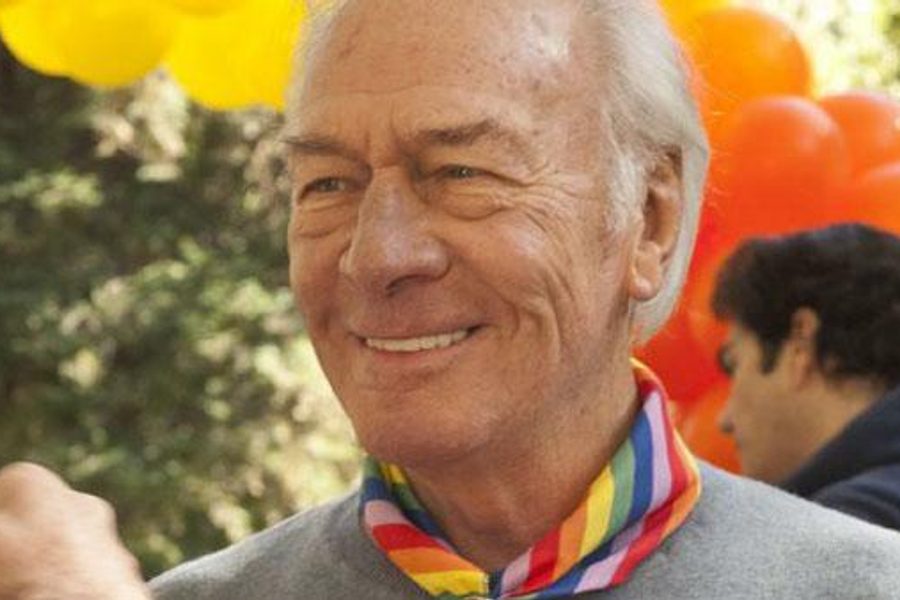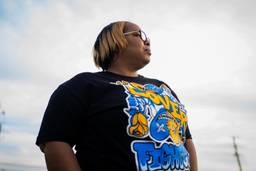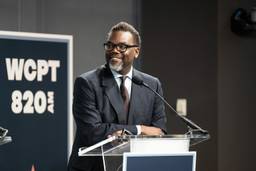It’s Been Getting Better; Now Someone Tell Hollywood
Debunking the American Horror Story of gay and lesbian aging.
Dustin Goltz

Tonight, the 24th GLAAD media awards will honor representations of LGBT hope and equality. While GLAAD’s past and current efforts are surely worthy of commendation, many of the TV shows and movies that have been and will be celebrated continue to depict gay happiness as having a short shelf life (or at least, a “best if used by” suggestion) — sometimes as early as one’s 30th birthday. Although studies generally suggest older gays and lesbians report satisfaction on par with aging heterosexuals, our media and culture continually narrate older gay characters as sad, defeated failures. These stories need to change.
Having conducted in-depth studies of gay television and film representation since the early 2000s, I’ve found that gay characters are most often depicted as adolescents and young adults, ranging in age from teens to the ever-popular Will Truman-esque white, upper-middle-class gay male lawyer/doctor type in his 30s. The rarely seen over-40 gay male often portrayed as “that creepy old gay guy” the younger gays fear becoming. After all, no one questions why Richard Dreyfess was contemplating suicide at the beginning of Poseidon, or why on Queer as Folk, Brian’s friends threw him a “deathday” party for his 30th birthday. In mainstream gay male culture, where youth and beauty are worshipped, fear of aging haunts gay youth like a menacing Freddy Krueger. Hyper-sexualized and predatory, the older gay man is routinely positioned at the corner of the bar, isolated and desperate — a cruel foreshadowing of the consequences of deviating from the heterosexual path.
Sound a bit dramatic? Consider the GLAAD-nominated Glee, where the only older gay character is the student-fondling drug dealer and former teacher Sandy Ryerson. Another nominee, ABC’s Modern Family, recently aired an episode titled “New Year’s Eve,” where the gay couple Mitchell and Cam explore gay bars in Palm Springs. In a club full of young boys, Mitchell and Cam are invisible and ignored. When stepping into an older gay male bar, they cringe at gray-haired men whose ogling is constructed as a creepy, laughable site gag.
As for aging lesbians, few representations exist to counter the lingering cautionary tales of the cursed, hardened, predatory and lonely spinster — a different but not unrelated American Horror Story. Typically cast in supporting roles, lesbians rarely have their own life, story or future on the cultural screen.
Neither erasure of older lesbians nor media depictions of sad gay elders do gay youth any favors. Mainstream culture has long depicted gay aging as a sinister trajectory of depression, loneliness, sexual predation and suicide. But the trope is more tragic than the reality. For years, studies have reported a decline in depression and successful, healthy aging for older gays and lesbians. Contrary to bleak images of doomed older gays, it’s gay youth who face the greatest emotional obstacles and anxieties.
It’s not only mainstream entertainment that perpetuates the myth of older gay unhappiness. Many well-intentioned parents perpetuate it too. “It’s a harder life.” “It’s a lonely life.” “It’s just not the life I wanted for you.” Coming from parents of gay children, these words are often expressed with love and genuine concern, yet they reify the very violence and pain parents wish to protect their children from. Who ever said heterosexuality alone guarantees an easy road?
The “harder path” narrative is deeply entrenched. Once, following a presentation of my research, a mother of a lesbian now in her 20s approached me in tears, realizing she had regurgitated these negative predictions to her daughter several years ago. “What did I know?” she asked. I asked her how her daughter was doing today. She smiled. “She’s amazing. Just perfect.”
The idea of facing the “harder road” in the future still produces a very real, tangible anxiety for gay youth. Sentiments ranging from ambivalence to outright fear of turning into “one of those older gays” are expressed in clinical research and popular media alike. As we scratch our heads, trying to understand the epidemic of off-screen suicide, suicidal ideation, and self-destructive behaviors in gay youth, we must interrogate our own behaviors.
While often perceived as solely an anti-bullying effort, the anti-suicide campaign It Gets Better also enacts a radical challenge to homophobic cautionary tales. The message that it gets better is an important disruption to the long-perpetuated assumption that, for gay people, it always gets worse. It challenges the idea that the future is something to fear, if not avoid.
Television and film writers and producers need to stop reiterating the tired and dangerous story wherein only heterosexuality leads to happy futures. Aging gays are far too often exploited onscreen as a quick joke, a tragic lesson or an easy villain. Although his character did not survive the film (a fate shared by many older gay and lesbian characters), Christopher Plummer’s joy-filled portrayal of an older gay man in The Beginners serves as one highly effective, feature-length It Gets Better video. Also, as we move toward marriage equality, let’s not make The New Normal the only alternative to tragedy. Marriage and children can’t be the only other path. There are many futures to be shared. We owe the youth more and better stories.
Finally, parents of gay children need to be very careful of predicting the “harder” and “lonely” life, or indulging that narrative when they encounter it themselves. It’s a scary, dangerous, and destructive story, even if delivered out of love. No one can know their own future, but I do know that the horrifying images of gay futures work to obscure and foreclose all the wonderful things that life might, can, and ought to be. These images place an expiration date on hope for a gay teen. By restoring a future for gay youth to invest in, by re-appropriating hope, a revised cultural narrative will help make it better.




